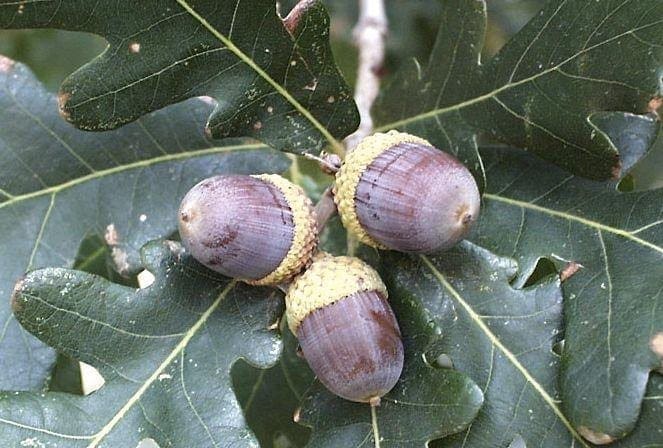Red Oak or White? with Chestnut Hill Outdoors

Mast orchards are a great way to increase your land’s ability to attract and hold more wildlife. Planting soft mast producers for the early fall and hard mast trees for later is a good way to increase the period and level of attraction, and you can improve both even further by selecting a variety of each.
Oaks are among the most popular hard mast producers because they’re relatively easy to plant and maintain, and provide one of the most nutritious preferred deer foods. Even better, they come in several different varieties, each with different growth and mast producing characteristics.
Botanists lump oak species into two general groups: red (or black) and white. They differ in several ways, including how they produce acorns. White oak acorns require one year to mature while red oak acorns take two years. That makes white oaks a more reliable source of mast, given favorable growing conditions. Conversely, the red oak’s two year cycle is less consistent but a good hedge against all-out mast crop failure during one bad year.
There are other differences. Most (but not all) white oak varieties tend to drop acorns early and over a relatively short time. White oak acorns tend to be smaller, though there are exceptions (like swamp chestnut oak), and are low in tannins making them sweeter. That makes them highly attractive, while they last.
Red oak acorns drop over a longer period, are larger and higher in fats, cabohydrates and tannins. That makes them an important nutritional source for deer as they fatten up for winter, though the tannins make the acorns a tad more bitter.
So which is the better choice for deer? Each has its advantages and disadvantages but the best answer is: both. White oaks will provide an abundant, attractive food source for a shorter period, earlier in the season. Red oaks will continue drawing deer later in the season, and may be the only mast source in years when a late frost, a cold spring or heavy rains during the pollination period could mean failure in the white oak acorn crop.
Chestnut Hill Outdoors offers seven different species of oak with representatives from both red and white groups. Most red oaks normally begin to bear in 10-20 years and grow as tall as 60-80 feet or more. However, sawtooth oaks bear in only 4-6 years, which makes them extremely popular with wildlife orchardists. White Oaks normally take at least 20 or more years before they start to bear. However, live oaks grow relatively quickly and bear within 6-10 years. They’re also one of the most heat tolerant oak species, making them a good choice for the southeast Atlantic and Gulf coasts from North Carolina south to Florida and west to Texas.
Chestnut Hill Outdoors is more than just a nursery. In order to ensure you receive the maximum benefit from their products, they also provide sound advice and instruction on proper planting and care. For more on the different varieties of oaks available from Chestnut Hill Outdoors, pricing and and how to care for them, visit ChestnutHillOutdoors.com, or call (855) 386-7826.
Chestnut Hill is the best place for you to purchase your food plot and deer attractant plants because they offer a large selection, their plants are specifically bred to attract deer, and they offer customers different sized plants at different levels of growth.
For more information, please visit

